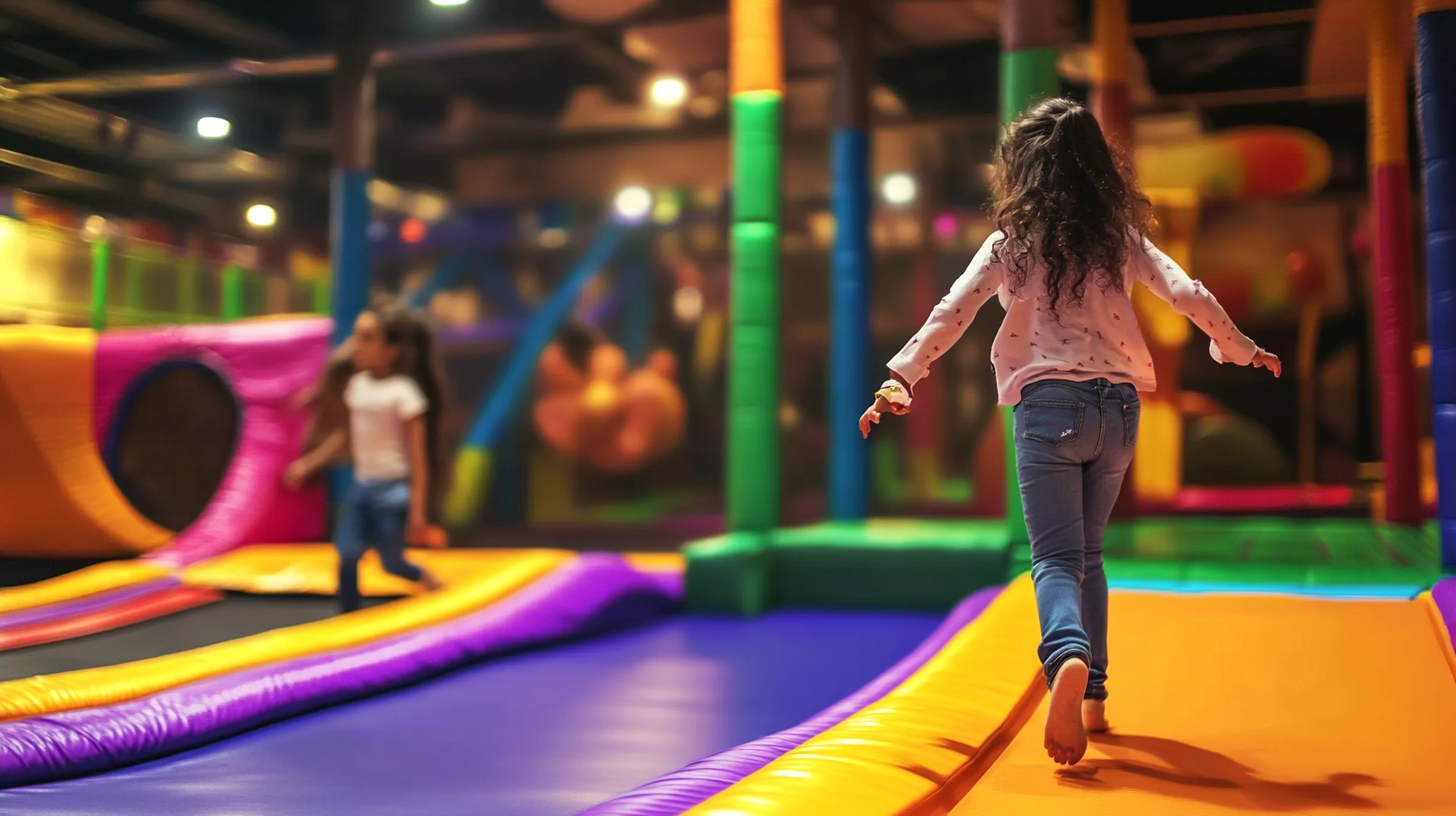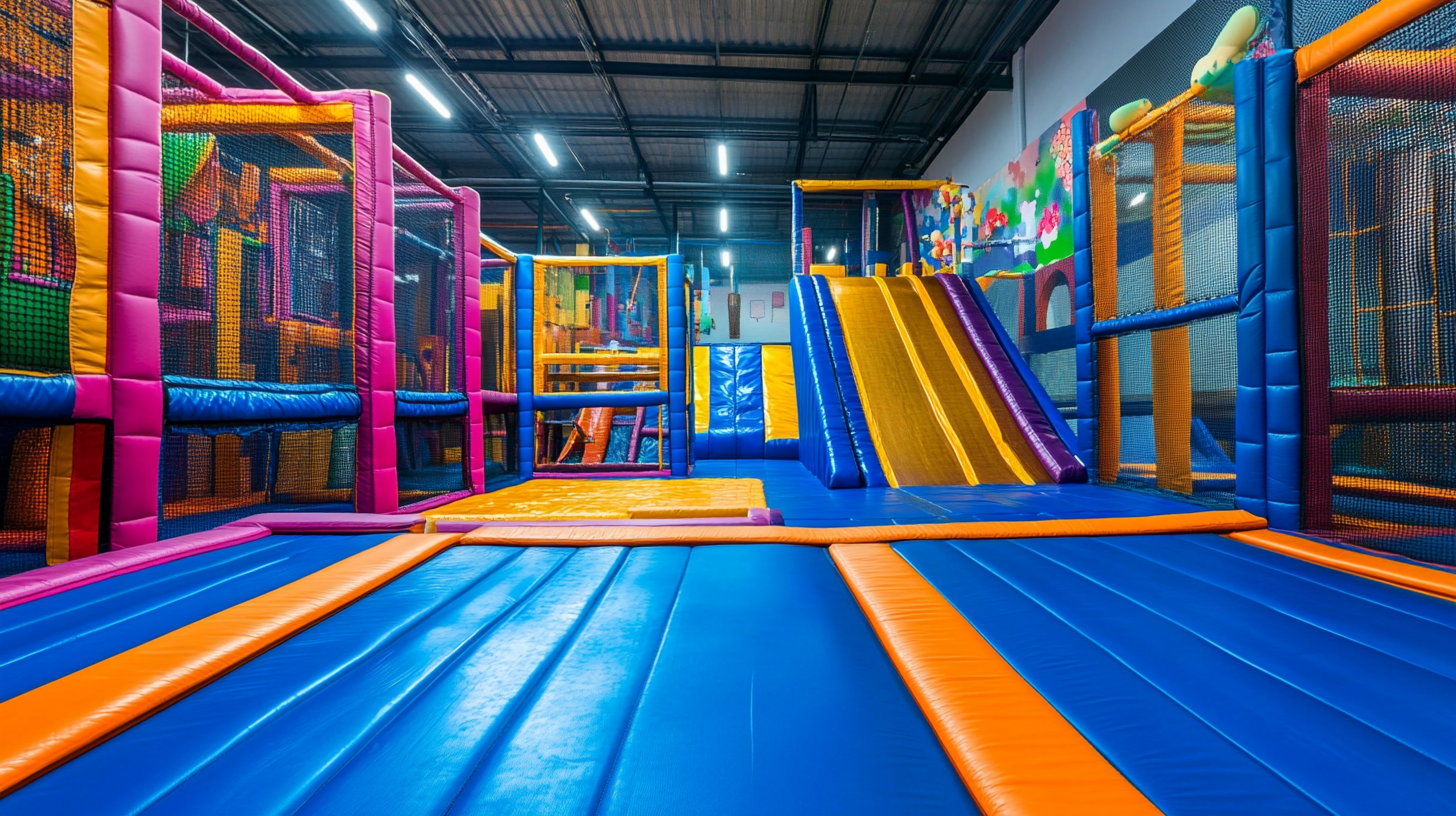
Inquiry
Form loading...
In recent years, the popularity of Indoor Playground Trampolines has skyrocketed, offering a dynamic and engaging environment for children and adults alike. According to a report by IBISWorld, the trampoline park industry has grown substantially, with an estimated revenue increase of over 25% in just a few years, highlighting the rising demand for indoor recreational activities.

Indoor Playground Trampolines not only provide a thrilling experience but also promote physical fitness, social interaction, and stress relief across all age groups. For families seeking a safe and enjoyable venue, these trampoline types offer unique benefits that cater to various needs—from enhancing children’s motor skills to providing adults with an exhilarating workout.
This article will explore the diverse types of Indoor Playground Trampolines available, focusing on their distinct advantages and how they contribute to an inclusive recreational atmosphere for everyone.
Indoor trampolines come in various types, each designed to cater to different preferences and age groups. One popular type is the standard rectangular trampoline, which offers ample jumping space and is ideal for children and adults seeking a traditional bouncing experience. These trampolines typically feature a sturdy frame and high-quality springs, providing excellent rebound and stability. They are perfect for family gatherings or parties, where everyone can jump and play together.
Another innovative option is the mini trampoline, often referred to as a rebounder. These compact trampolines are suitable for younger children and are perfect for small indoor spaces. They promote physical activity in a safe environment and can help improve coordination and balance. Mini trampolines come with safety features like padded edges and lower heights, making them a great choice for parents looking to engage their toddlers in fun exercises.
For those seeking a more adventurous experience, the trampoline park-style setups offer interconnected trampolines, angled walls, and foam pits. These setups provide an exciting playground environment that encourages creativity and active play for all ages. Whether you are looking to tumble or try out some new tricks, these trampolines enhance the thrill of indoor jumping, making it appealing to teenagers and adults who enjoy extreme sports.
 When considering indoor playgrounds, trampolines offer unique benefits tailored to various age groups. For toddlers, small, soft trampolines with safety features foster early motor skills and encourage independent play. These trampolines are designed with low heights and protective edges to keep little ones safe while they bounce, promoting coordination and balance in a secure environment.
When considering indoor playgrounds, trampolines offer unique benefits tailored to various age groups. For toddlers, small, soft trampolines with safety features foster early motor skills and encourage independent play. These trampolines are designed with low heights and protective edges to keep little ones safe while they bounce, promoting coordination and balance in a secure environment.
As children grow, so do their needs for more active engagement. Standard-sized trampolines with safety nets become ideal for preschoolers and early school-aged kids. They enhance physical fitness, allowing children to develop strength, flexibility, and spatial awareness through jumping games and tricks. Moreover, group bouncing fosters social skills as kids learn cooperation and sharing in a fun, energetic setting.
For teenagers and adults, larger, high-performance trampolines offer a new realm of fitness and enjoyment. These trampolines allow for advanced tricks and acrobatics, catering to a more intense fitness regime while also providing an exciting recreational outlet. Utilizing trampolines as a workout tool not only helps in building endurance but also improves overall agility, making them a perfect choice for older age groups looking to stay active and entertained.
When selecting an indoor trampoline, safety must be the paramount consideration for all age groups. According to the American Academy of Pediatrics, approximately 100,000 trampoline-related injuries occur annually in the United States, emphasizing the importance of choosing models that prioritize safety features. Look for trampolines with safety nets, padded frames, and a sturdy design to minimize the risk of injury, especially for younger users. A well-constructed indoor trampoline can make a significant difference in ensuring a safe jumping experience.
Moreover, it’s essential to adhere to age and weight restrictions provided by manufacturers. The International Association for Trampoline Parks (IATP) recommends that trampolines should not be used by children under the age of 6 without adult supervision. Additionally, ensuring that the jumping area is free from obstacles and that surfaces around the trampoline are soft can further reduce the chance of accidents. When investing in a trampoline for all ages, thorough research into safety certifications, such as ASTM International standards, can help guide your choice and ensure a secure environment for endless fun.
When considering the ideal indoor playground setup, trampoline types play a crucial role, not only in fun but also in space efficiency. Various trampoline configurations cater to different age groups and activity levels, making it essential to compare their space requirements for optimal placement.
For younger children, mini trampolines—often used with safety enclosures—require less space and can easily fit into smaller play areas. These compact designs allow for safe bouncing experiences without overwhelming the room.
In contrast, larger trampolines designed for older children or adults, such as rectangular or octagonal models, demand more room due to their increased jumping surface and safety zones. Proper spacing is necessary to avoid collisions and ensure a safe environment, making these configurations better suited for larger indoor playgrounds.
Moreover, multi-trampoline setups can maximize play value but require careful consideration of space layout. Bounce zones, safety mats, and adjacent play equipment should all be strategically planned to create an engaging yet safe atmosphere. By understanding these spatial needs, facility owners can effectively design indoor playgrounds that cater to diverse age groups while optimizing the available space.
 Indoor trampoline parks have become increasingly popular, providing a fun and safe environment for people of all ages to enjoy bouncing and playing. The innovative designs of modern indoor playground trampolines go beyond traditional models, catering to various interests and fitness levels. From sprawling jump areas to creative obstacle courses, these setups encourage physical activity while making exercise enjoyable for families.
Indoor trampoline parks have become increasingly popular, providing a fun and safe environment for people of all ages to enjoy bouncing and playing. The innovative designs of modern indoor playground trampolines go beyond traditional models, catering to various interests and fitness levels. From sprawling jump areas to creative obstacle courses, these setups encourage physical activity while making exercise enjoyable for families.
One of the standout features of contemporary indoor trampoline parks is their focus on fitness. Many facilities incorporate specialized zones where individuals can engage in aerobic workouts, strength training, or even guided fitness classes right on the trampoline. This multifaceted approach ensures that children, teens, and adults alike can find a way to enhance their physical health while having a blast. Furthermore, the design of these playgrounds promotes social interaction, allowing friends and family to bond through shared activities that combine entertainment with exercise.
Safety is also a key consideration in the innovative designs of indoor trampolines. Features such as enclosed jumping areas, impact padding, and sturdy configurations minimize the risk of injury, making it easier for parents to feel confident about their children’s playtime. By prioritizing safety alongside fun, these trampoline parks not only promote physical fitness but also provide peace of mind for families visiting the facilities.
